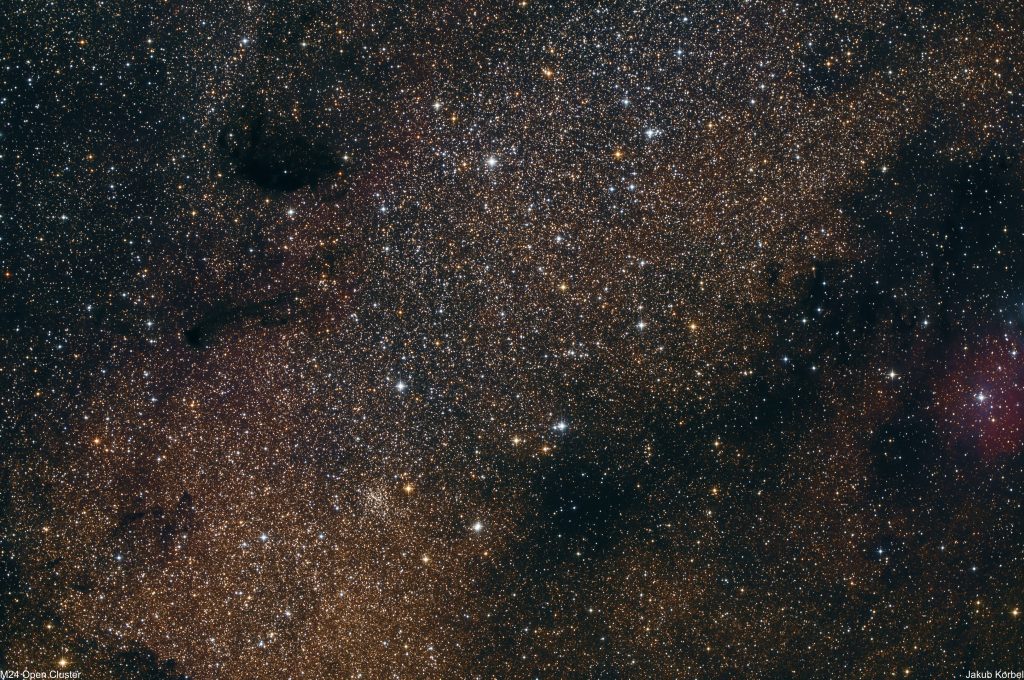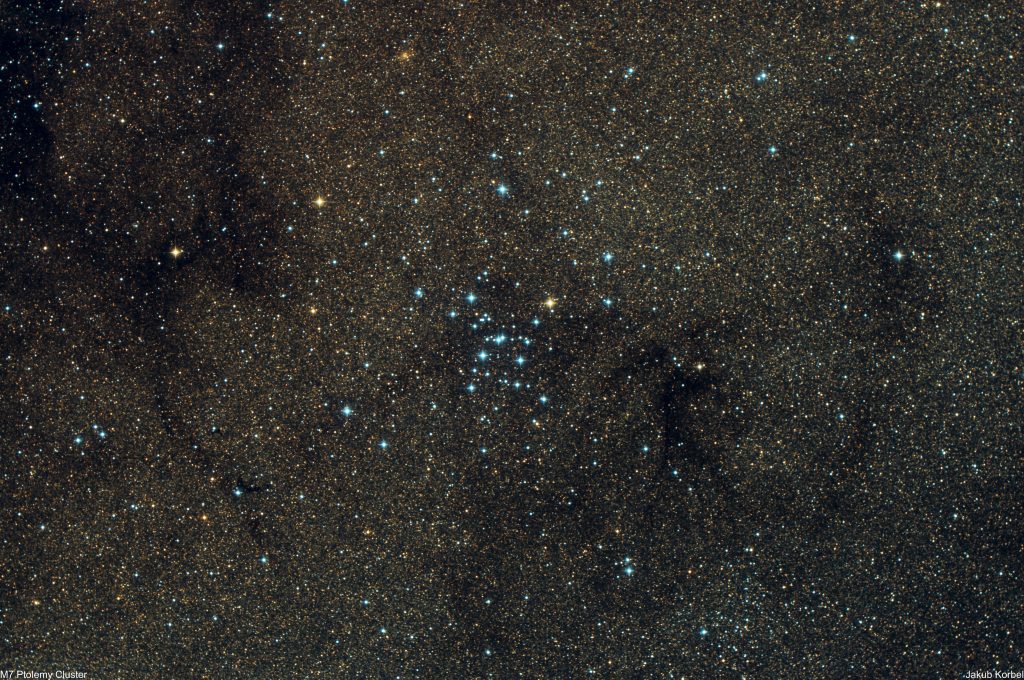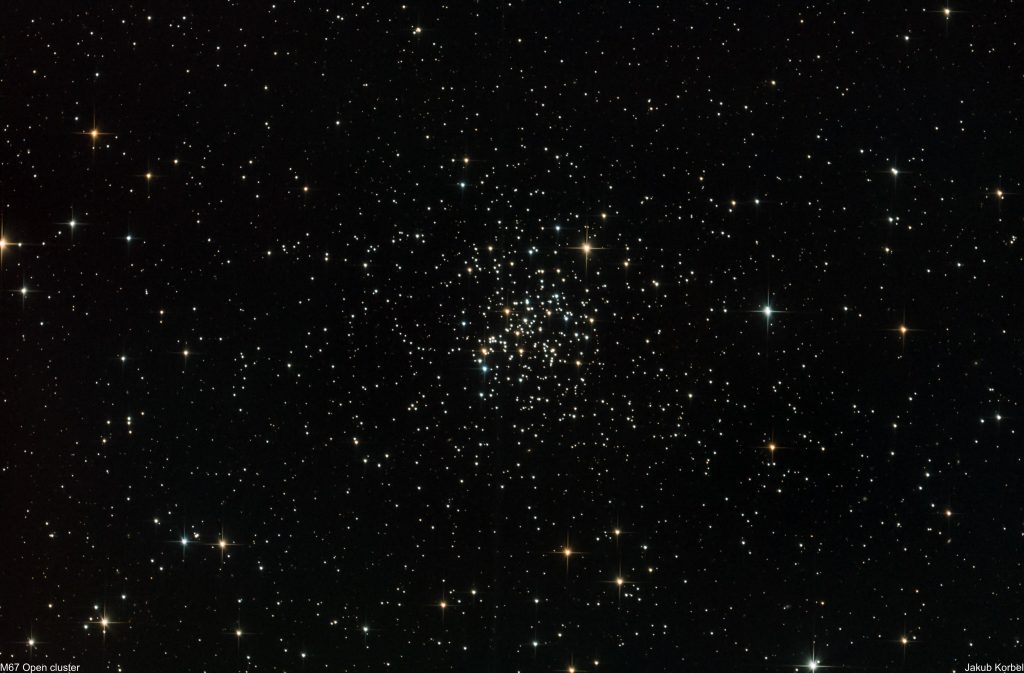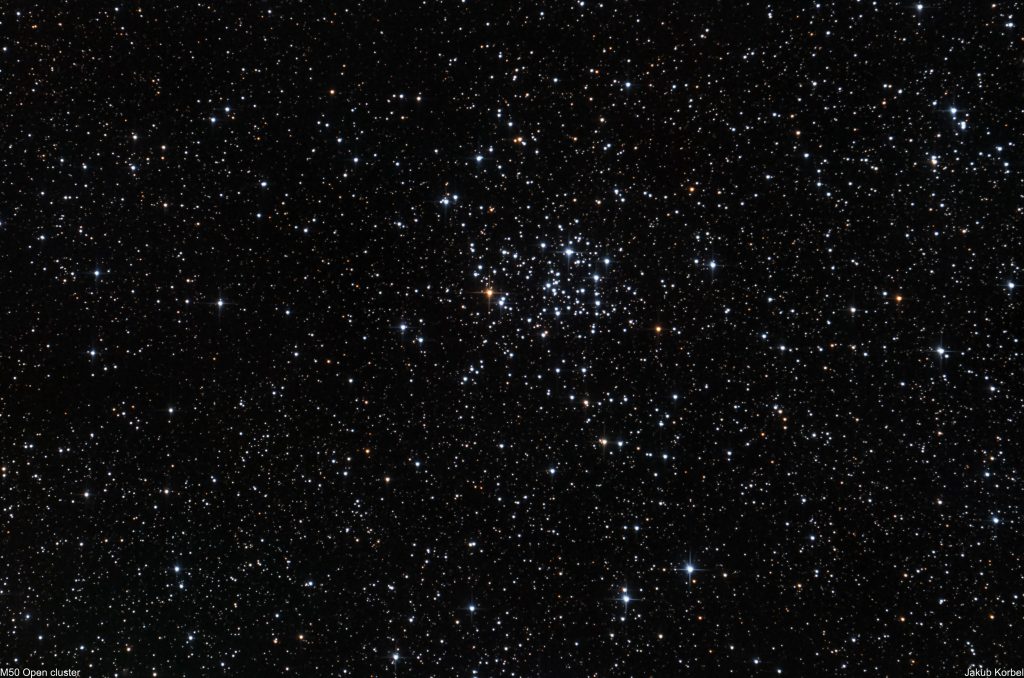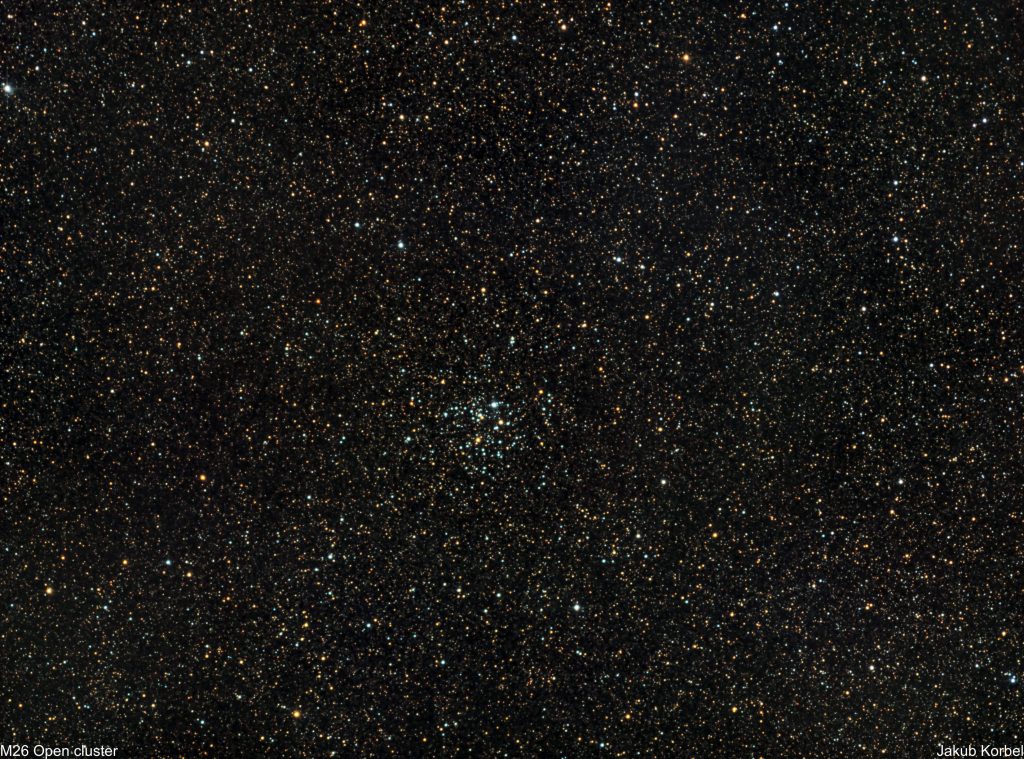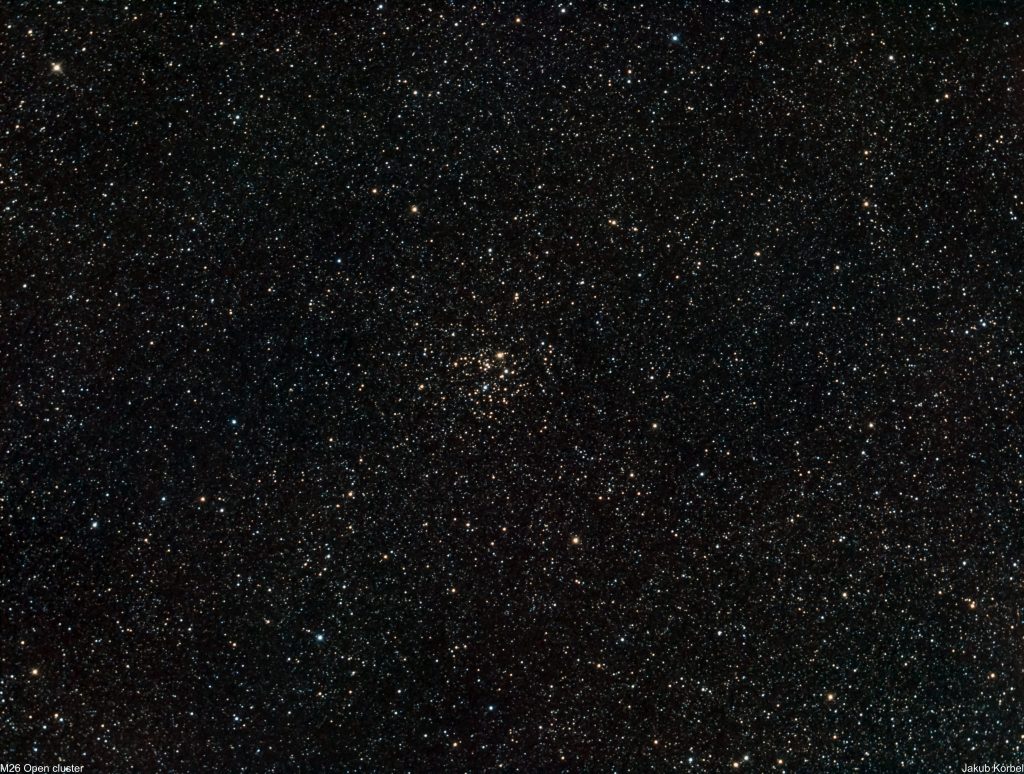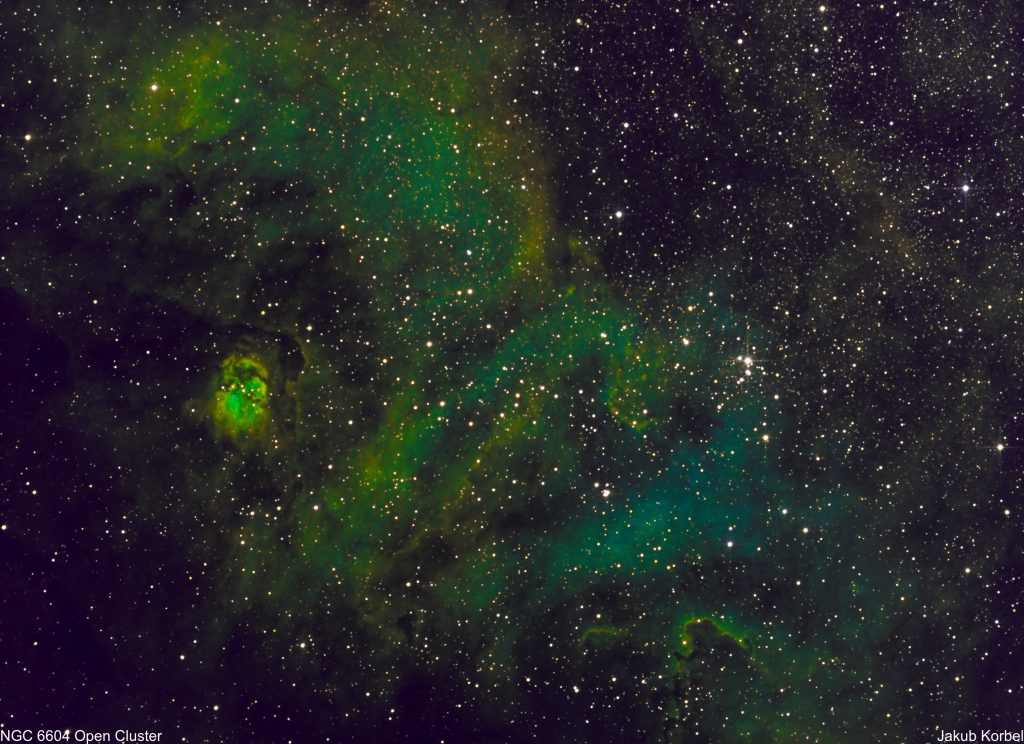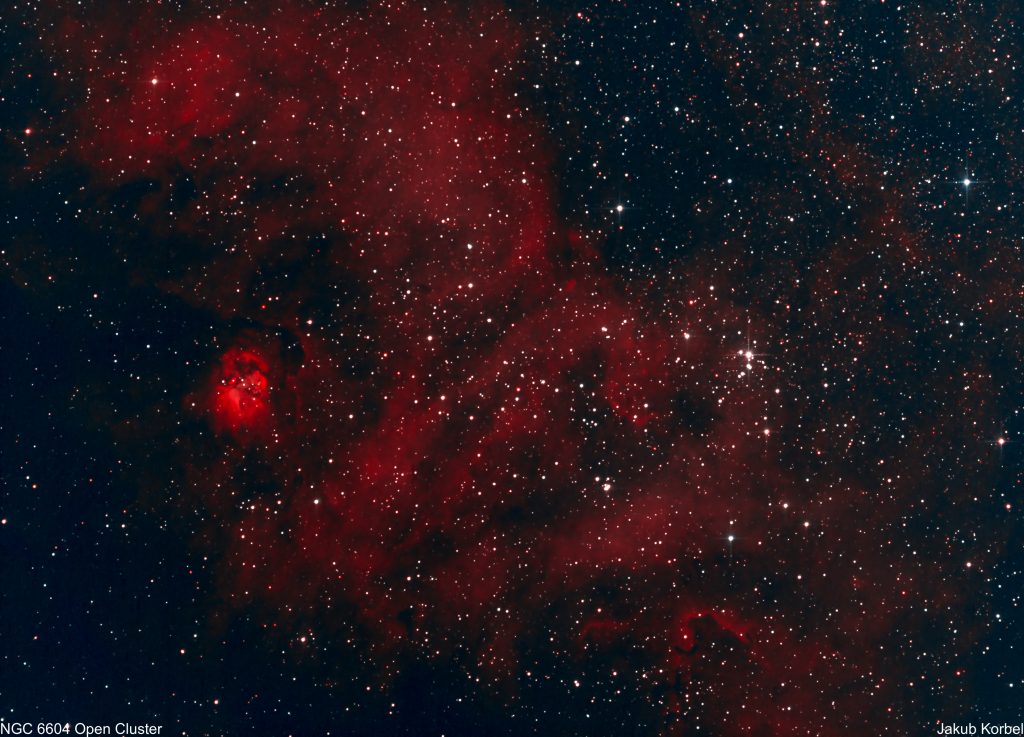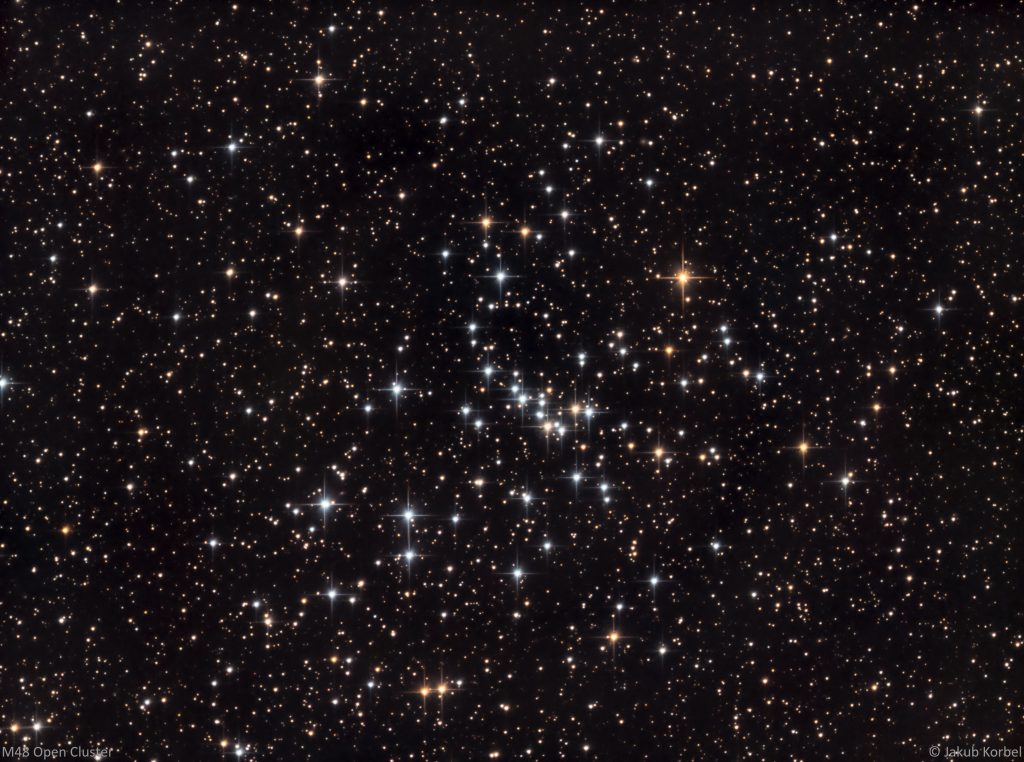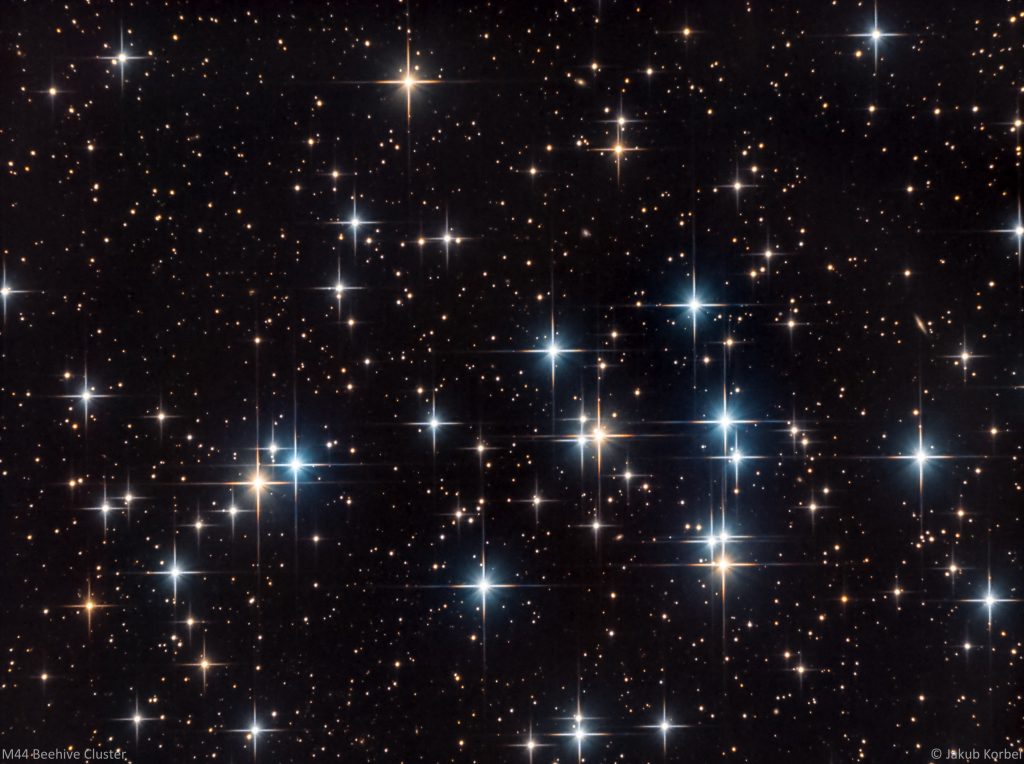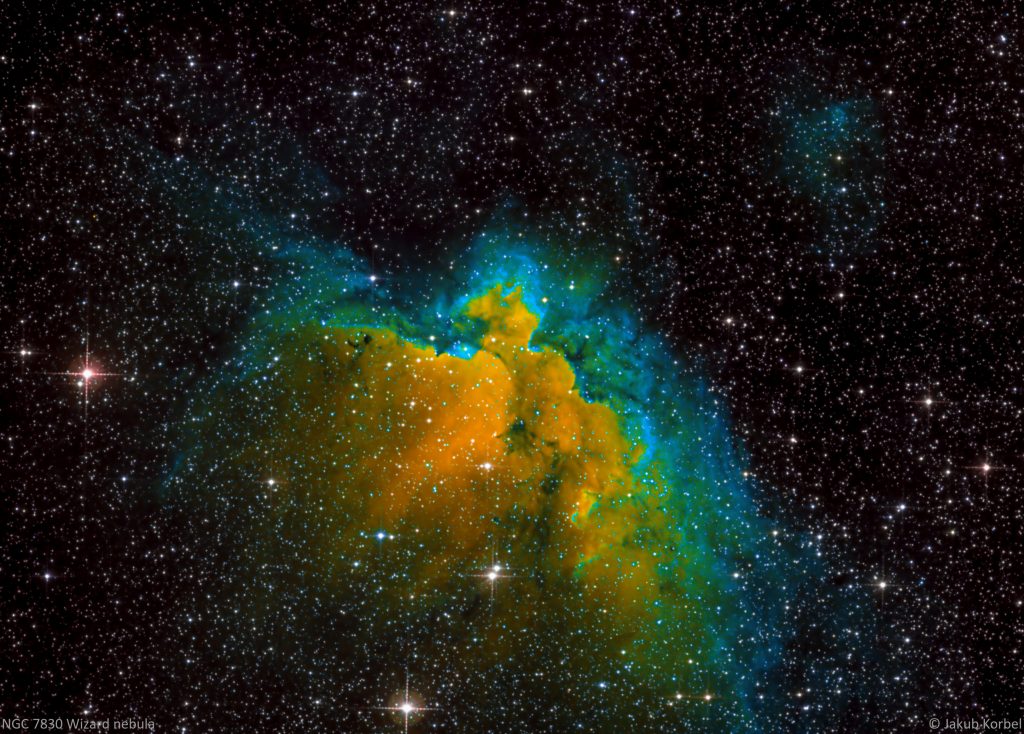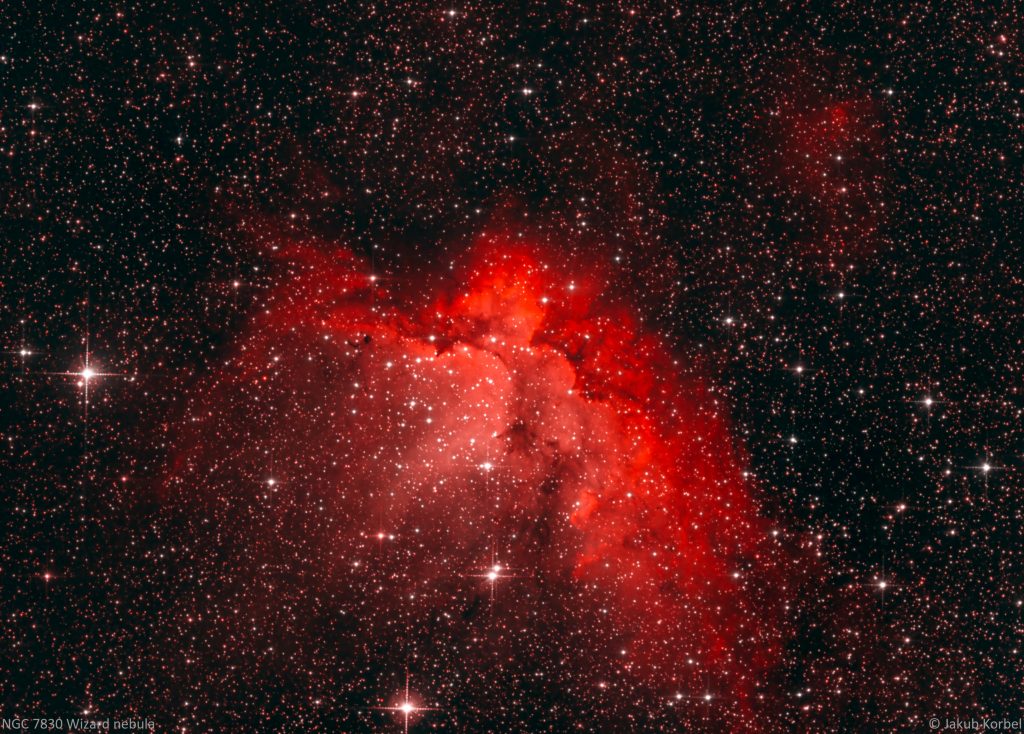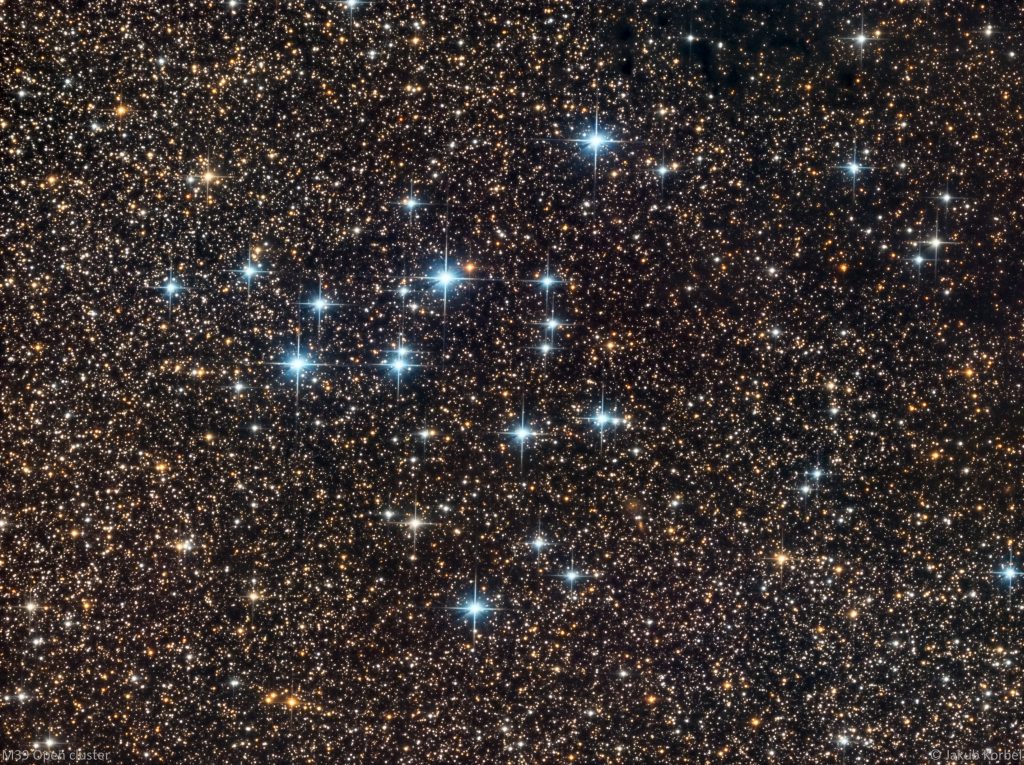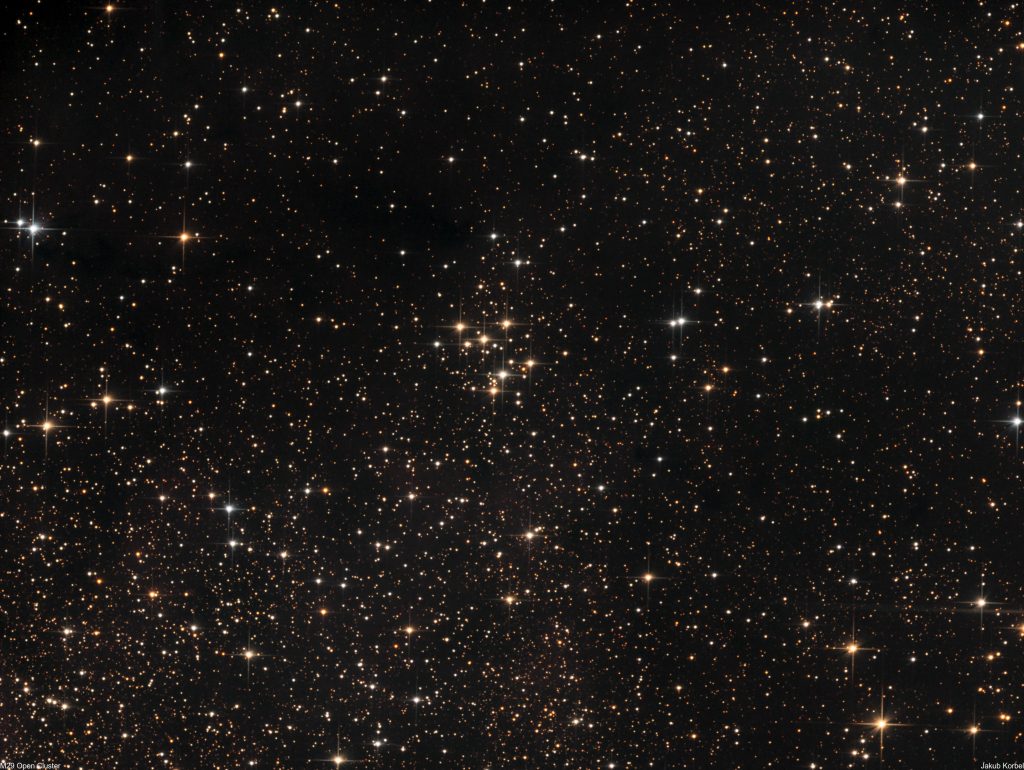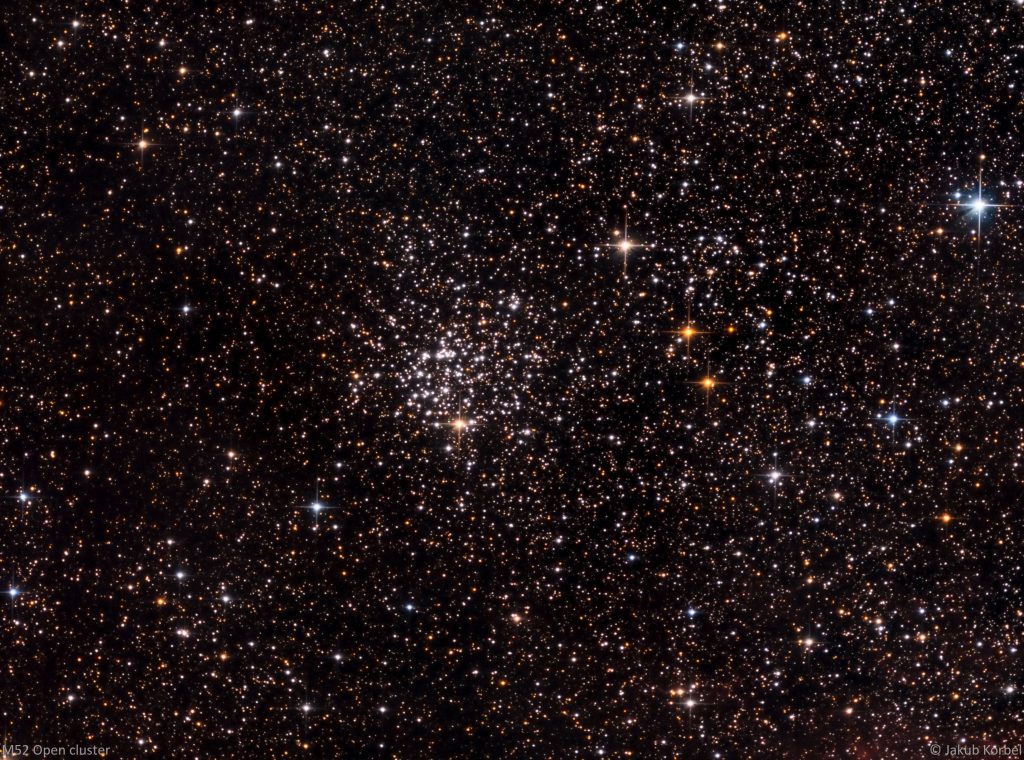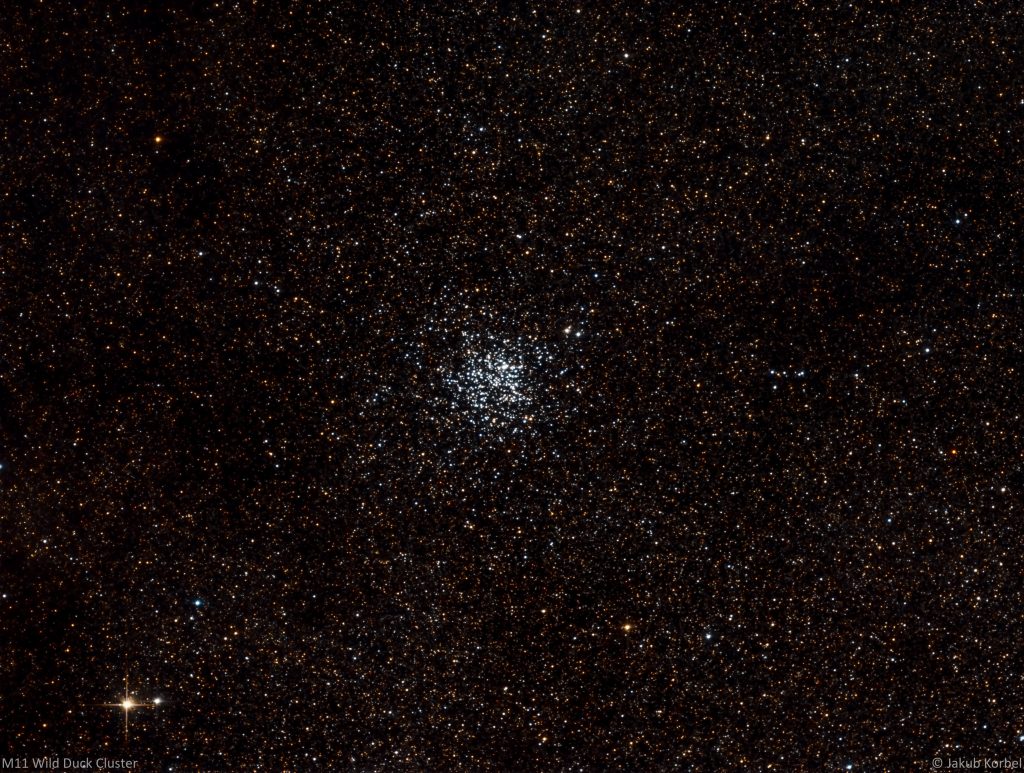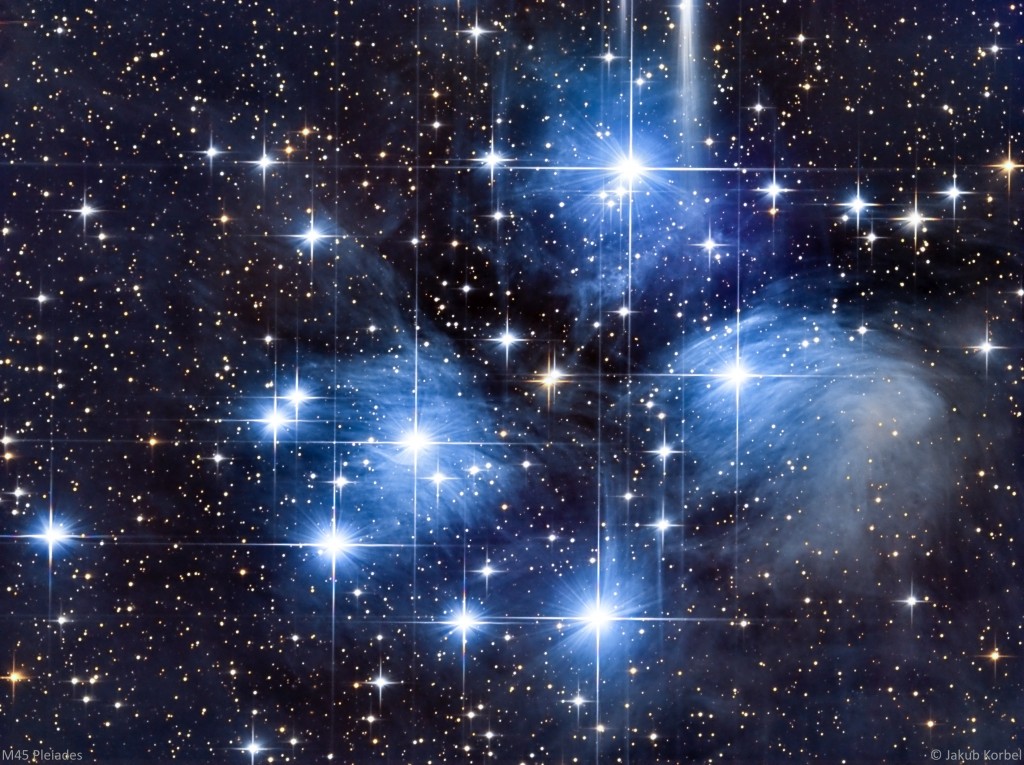Messier 24, also called Small Sagittarius Star Cluster, is a giant cloud of stars and open star clusters. In fact, M24 is not gravitational bonded object, but it is only spiral arm of Milky Way galaxy. The light coming from the cloud is partially blocked by two prominent dark nebulae. The cloud is literally surrounded by Messier objects. In north-east direction can be located Omega Nebula M17 and open cluster M18, just 3° direction north open cluster M25 can be seen, 5° direction west open cluster M23, 6° south-west nebulae M20 Trifid and M8 Lagoon nebula.
Technical details:
| Telescope | Newton 150/600 mm |
| Aperture | 150 mm |
| Focal length | 660 mm |
| Mount | iOptron CEM25P |
| Autoguiding | QHYCCD miniGuideScope 130 mm f/4.3, ZWO 174 MM |
| Camera | ZWO 071 Pro @-10C |
| Corrector | Explore Scientific HR coma corrector |
| Filters | Astronomik L-1 - UV IR Block Filter |
| Exposure | 27x180s, Gain 134, bin 1x1, |
| Date | 2018-09-05 |

